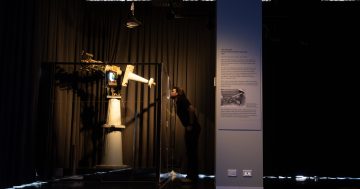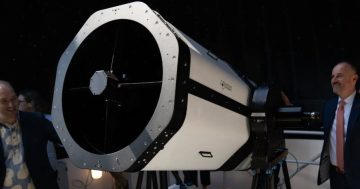
An aerial view of Mount Stromlo Observatory as it appeared in 2014. Photo: Mount Stromlo Observatory.
In September 1911, the Oddie Telescope was completed atop Mount Stromlo. The dome around it became the first federal building in the newly established Australian Capital Territory.
This month marks 110 years since then, and Mount Stromlo Observatory remains in operation as one of the oldest institutions in the ACT. A range of telescopes scour the skies, supplying valuable information to researchers from the Australian National University (ANU).
The organisation itself began in another of Canberra’s oldest institutions, Hostel No. 1, which is now known as Hyatt Hotel Canberra.
When the hostel opened in 1924, not all of the rooms were used for accommodating travelling politicians from Melbourne and Sydney. The very first guest was WG Duffield, who took over a whole wing and set up the Commonwealth Solar Observatory.
This moved to Mount Stromlo in 1927, with interest lying in solar and atmospheric physics. The Director’s Residence, or Observatory House, was completed a year later.
Mount Stromlo wasn’t the only location on the cards for the observatory. Five mountains were considered, including Mount Ainslie and Black Mountain, but as plans for Canberra unfolded at the foot of these mountains, none were deemed remote enough.
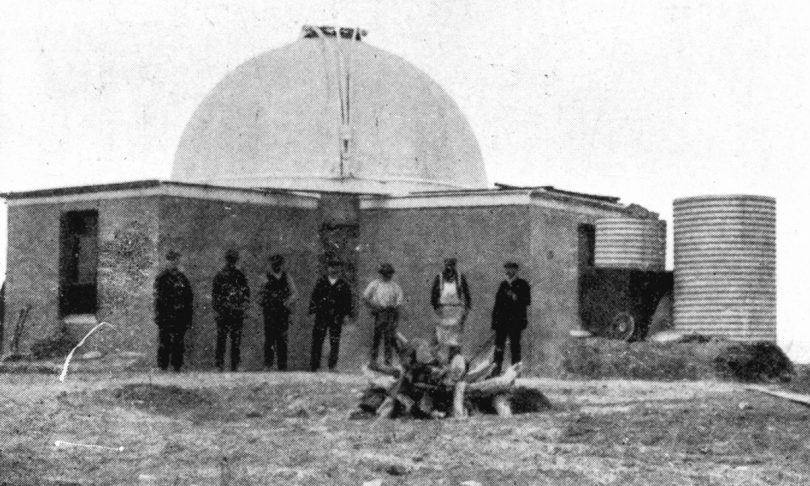
The dome over the Oddie Telescope on Mount Stromlo became the first federal building in the newly formed Australian Capital Territory. Photo: Mount Stromlo Observatory.
During World War II, the observatory took on a darker role as an optical munitions factory, one of three such government-run facilities making target sights for weapons.
After the war, it settled back into stargazing and branched out into the new research directions of stellar and galactic astronomy. ‘Solar’ was dropped from the name and it became ‘The Commonwealth Observatory’.
In 1952, lightning struck a nearby pine forest and started a raging bushfire. The fire destroyed several buildings and electricity supply to the water pumps, forcing staff to fight the blaze with buckets of water.
The observatory left the Commonwealth Department of the Interior in 1957 to join forces with the newly established ANU as Mount Stromlo Observatory.
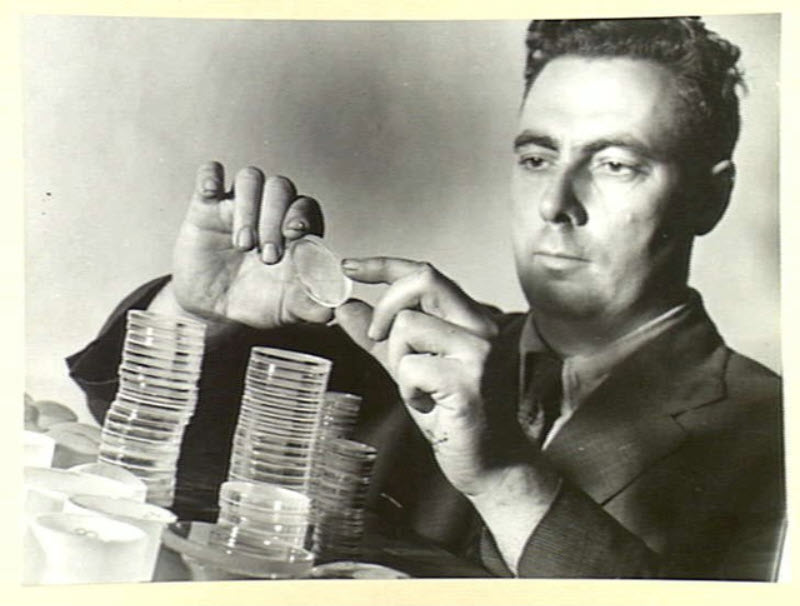
EJ Elwyn, a lecturer from Sydney University, examining lenses for use in World War II weapons. Photo: Australian War Memorial.
By the 1960s, the number of Canberra’s city lights was growing and beginning to interfere with night observations so a new permanent dark site was needed. A second observatory was stationed at Siding Spring in the Warrumbungle National Park, and together the pair became known as the ‘Mount Stromlo and Siding Spring Observatories’.
The main areas of research expanded again to look at the structure and evolution of planets, stars and galaxies, and the origin and development of the universe as a whole.
The greatest period of telescope acquisition on Mount Stromlo was during the mid-1950s, when four major instruments came to the mountain.
When the 2.3-metre reflector was completed in 1984, it was among the most technologically advanced telescopes in the world.
Local astronomers from the ANU Research School of Astronomy & Astrophysics were not ones to be left behind on global research, and in the 1990s Mount Stromlo obtained one of the 10-metre class telescopes that were being built around the world.
But then on 18 January, 2003, disaster struck again as a massive firestorm hit Mount Stromlo during the Canberra bushfires and consumed all of the telescopes, the library and workshops onsite. Only an empty shell remained.
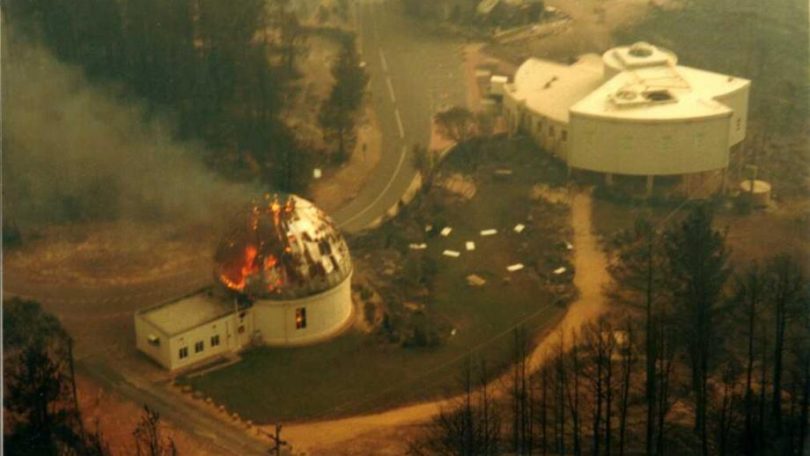
An aerial view of Yale Columbia on fire during the 2003 Canberra bushfires. Photo: ANU.
Parts of the Yale Columbia refractor telescope were salvaged and given a new lease on life as ‘The Astronomer’ sculpture in front of the Questacon science museum in Parkes.
The years following the fires of 2003 saw a period of redevelopment and growth for the research school. The workshops lost in the fires have been replaced by the Advanced Instrumentation Technology Centre, a world-class facility for developing astronomical instruments.
The SkyMapper telescope replaces some of the lost telescope capabilities and saw first light in 2008. This remotely operated telescope is busily conducting the first all-sky survey of the southern sky over a five-year period.
The ANU Research School of Astronomy & Astrophysics has a total staff of approximately 90, most of whom work at Mount Stromlo where the main workshops and support facilities are located. There are about 45 astronomers and 30 graduate students undertaking PhD studies.
An onsite ‘Heritage Trail’ takes about 30 minutes to complete by foot and provides a comprehensive history of Mount Stromlo Observatory, complete with stunning views across Canberra.












